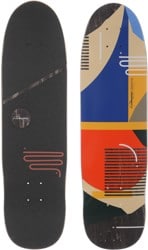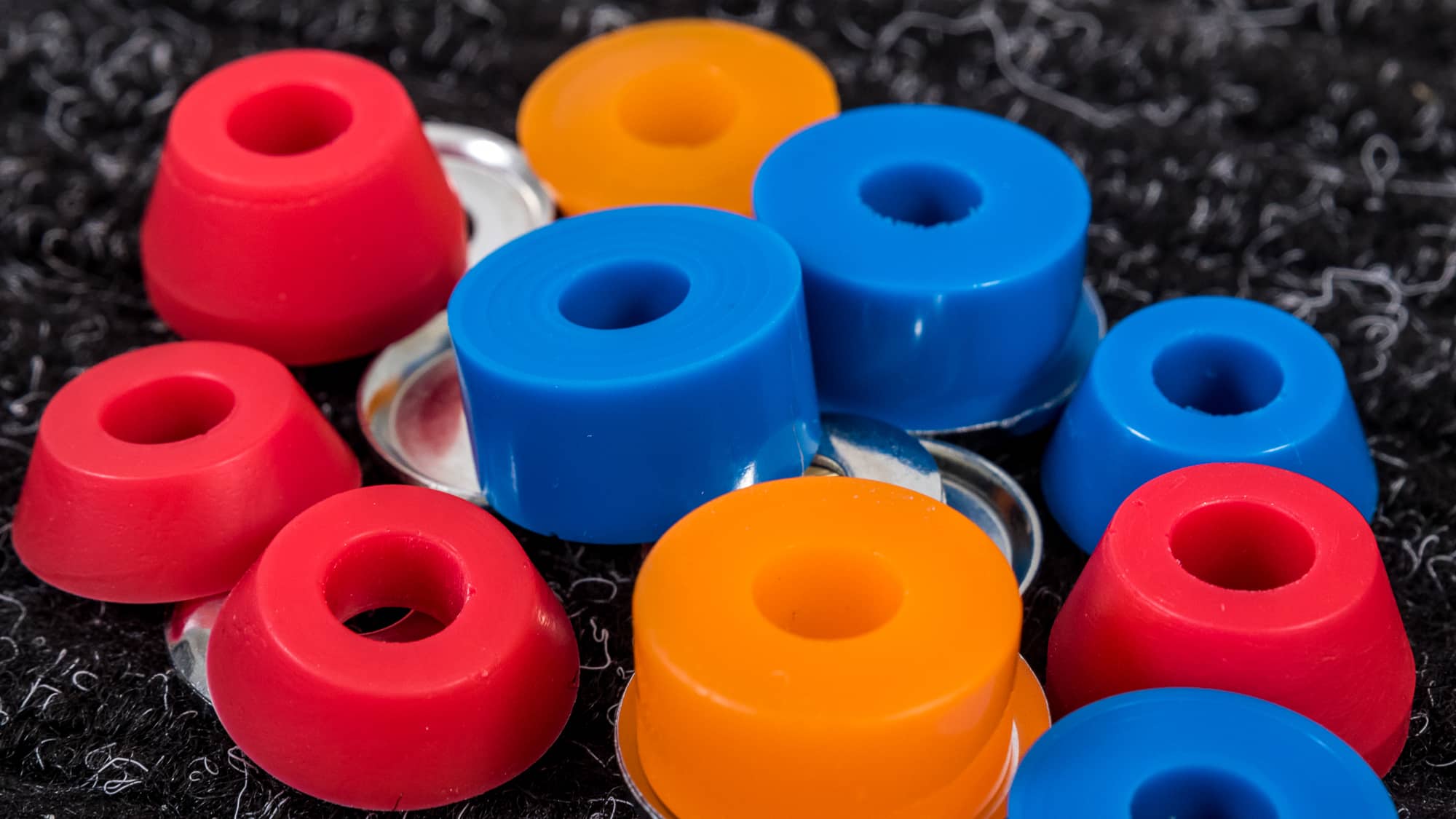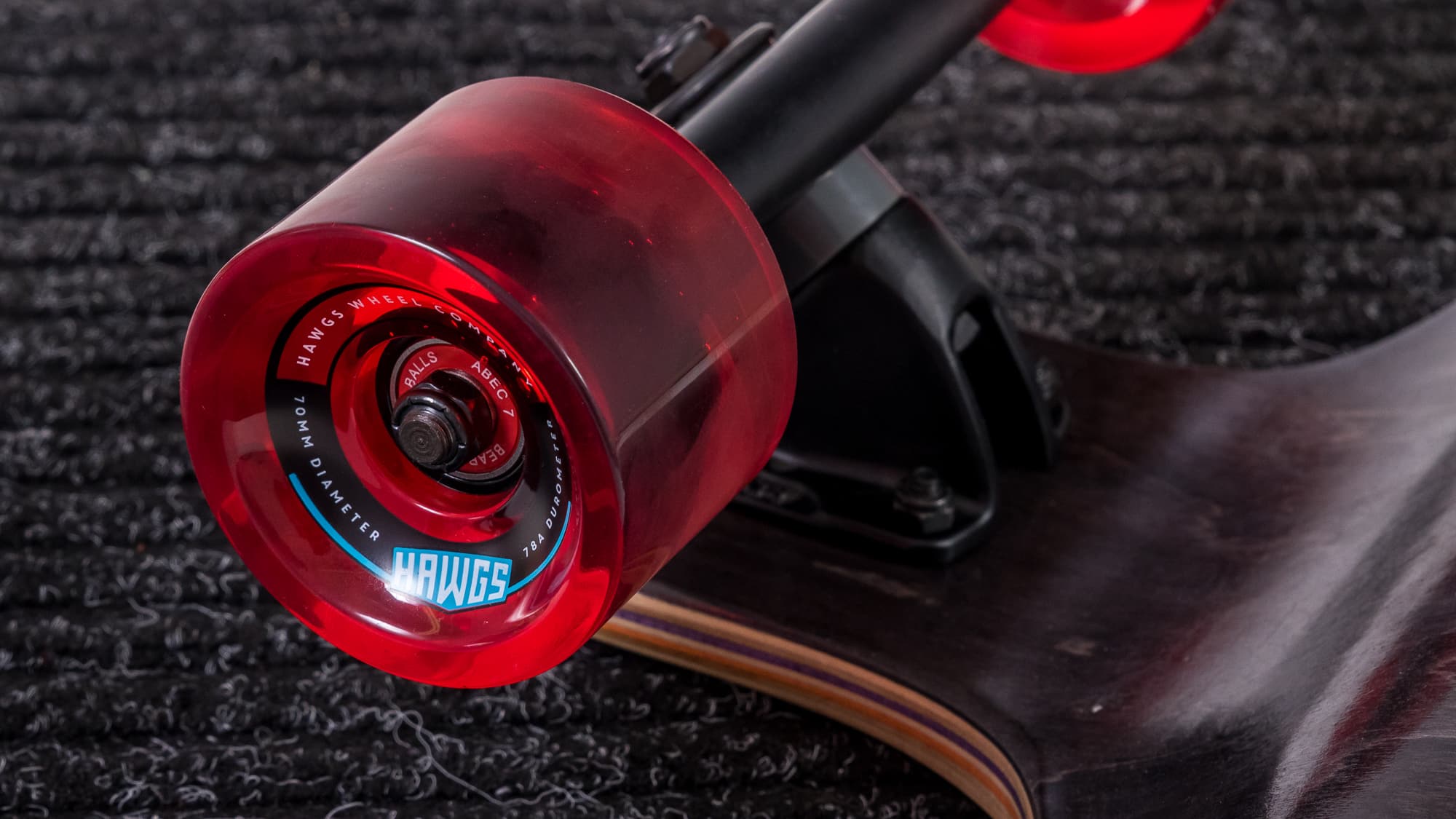Choosing A Longboard Deck

Longboard decks come in an almost overwhelmingly wide variety of size, shape, and style, so we created this guide to help find the best longboard deck for you.
Types of Longboard Decks
The first question to ask yourself is: What type of riding do I want to do? Read below to learn about the types of longboard decks that are designed to do everything from transportation, dancing, and freestyle tricks to slashing driveways and racing mounting roads.
Keep in mind that there is a ton of crossover between each riding style, and many decks are great options for multiple styles of riding. Use the categories below as a guide to help you find the deck features that are most important to you.
Carving Longboard Decks
If you love the feel of gliding down a mellow hill, path or street, these fun setups will give you a fun surfy feel that is hard to match. Carving longboards come in many sizes, but typically have a flexible construction to give you lively snap to your carves.
Freestyle Longboard Decks
Freestyle decks are the most versatile types of longboard deck because they're designed to blend many styles of skateboarding and longboarding. They are typically medium sized (35-40" long) with a symmetrical shape, flexible construction and kicktails on both ends. This allows riders to get creative with flat ground tricks and fancy footwork, but also makes them ideal for beginners who want to learn a little bit of everything from carving and cross-stepping to sliding and hill bombing.
Freeride Longboard Decks
Freeride longboard decks are designed to conquer steep roads and paths while sliding from side to side like a snowboard. They typically have symmetrical shapes with deep concave to lock your feet in place when slashing driveways, performing spins, switch slides and drifting corners. We recommend longer wheelbases (25-30") for beginners, but shorter wheelbases (17-25") can also be fun once you get comfortable with the basics.
Drop decks and drop through mounting are great options for beginner to intermediate level freeriders because they give you lower leverage on your trucks and make it easier to break into slides. Micro-drops and top mounted trucks are generally preferred among advanced freeriders because the added grip gives more control to help keep you on the road when drifting through tight corners.
Smaller longboard cruisers are also very fun for freeride because you they can fit into tight spaces and blend downhill slides with street style gaps and grinds.
Downhill Longboard Decks
If you want to go fast, drift corners and race your friends, you need a downhill longboard deck that can handle the high speeds and sharp turns of mountain roads. Downhill decks are usually directionally shaped decks with very stiff constructions. For beginners, we recommend choosing a board with a wheelbase of at least 25".
There is a lot of crossover between freeride and downhill, so boards designed for these types of riding are very similar and many riders use the same deck for both disciplines.
Longboard Cruiser Decks
If you're looking for a versatile setup for getting around town, a cruiser is what we recommend. Typically between 28-35" long, these boards blur the line between longboards and skateboards with a small sizes and kicktails for making it up cracks, curbs, and around tight corners. This makes them perfect for and dodging obstacles in the city.
Longboard Commuter Decks
If you have a long road ahead, a longer wheelbase (28-30") will provide more stability to get you there without draining your tank. We recommend choosing drop through and/or drop down decks to lower your center of gravity and save some extra energy on every push.
Keep Learning
Still Have Questions?
We’re here to help. You can call, email, chat or IM during business hours seven days a week. Our customer service staff skates…a lot. They know their stuff and are happy to help you with all things skate.




